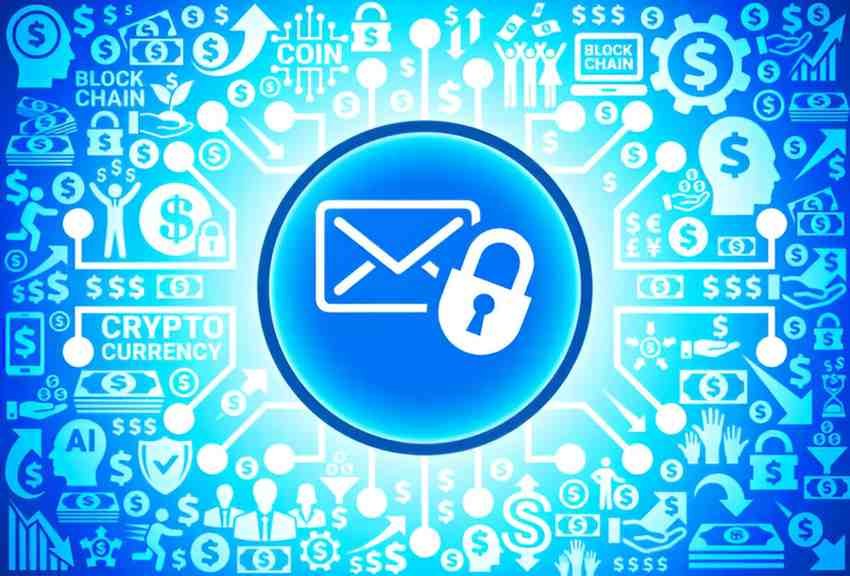In today’s digital age, email remains one of the most common forms of communication, both for personal and professional purposes. Yet, as convenient as email is, it is also a frequent target for cyberattacks. One of the most pressing concerns in email communication is securing sensitive information from unauthorized access, hacking, or data breaches. This is where cryptocurrency tools, often associated with blockchain technology, come into play. These tools offer innovative ways to protect your email communications using advanced cryptographic techniques. In this article, I’ll walk you through the various crypto tools available for email security, explaining how they work, their benefits, and why you might want to consider them.
Table of Contents
Why Crypto Tools for Email?
Before diving into specific tools, it’s important to understand why email security is critical. When we send emails, especially those that contain sensitive or personal information, we expose ourselves to potential security risks. Email can be intercepted, read by unauthorized parties, or altered in transit. Traditional email security measures, such as encryption, are often not enough to guarantee complete protection. With cybercrime on the rise, relying on stronger, more sophisticated methods is crucial.
That’s where crypto tools come in. By utilizing blockchain-based encryption and decentralized authentication methods, these tools create secure and private channels for sending and receiving emails. They not only prevent unauthorized access but also ensure that the integrity of the email’s content remains intact. Let’s now explore how these tools work in greater detail.
Understanding the Technology Behind Crypto Tools for Email
At the core of crypto tools for email security is cryptography. Cryptography refers to the practice of securing communication and data through mathematical algorithms, making it unreadable to anyone who doesn’t have the decryption key. Blockchain technology, which underpins many cryptocurrencies, introduces a decentralized system that further enhances security by distributing data across multiple nodes, rather than storing it in a central location.
When combined with email systems, these technologies can offer robust protection against various types of cyber threats. The two most prominent methods used in crypto tools for email security are public-key encryption and blockchain-based authentication.
Public-Key Encryption
Public-key encryption (also known as asymmetric encryption) is a method that uses two keys: a public key and a private key. The public key is shared with anyone who wants to send you a secure email, while the private key is kept secret. Only the private key can decrypt the messages sent to you, ensuring that unauthorized parties cannot read them, even if they intercept the email.
Example: How Public-Key Encryption Works
Let’s consider an example. Suppose you want to send a secure email to a friend named Alice. Here’s how public-key encryption works:
- Alice Shares Her Public Key: Alice generates a key pair, which consists of a public and private key. She shares her public key with you so that you can send her encrypted messages.
- You Encrypt the Message: You write an email to Alice, and before sending it, you encrypt it using Alice’s public key. Now, even if someone intercepts your email, they can’t read it because they don’t have Alice’s private key.
- Alice Decrypts the Message: Once Alice receives the email, she uses her private key to decrypt the message and read its contents.
The beauty of this system is that even though the email is transmitted over the internet (which may not always be secure), only the recipient who possesses the correct private key can access the content.
Blockchain-Based Authentication
Blockchain, most commonly associated with cryptocurrencies like Bitcoin, offers another layer of security. When used for email authentication, blockchain technology ensures that the sender and recipient are who they claim to be, and that the content hasn’t been tampered with. Unlike traditional centralized systems, blockchain doesn’t rely on a single point of failure. Instead, it uses a distributed ledger to authenticate and verify transactions (in this case, email exchanges).
Here’s how blockchain-based authentication can secure emails:
- Verification Through Decentralization: Instead of relying on a central server to validate an email, blockchain verifies the email through a decentralized network of nodes. Each email is hashed and recorded on the blockchain, making it nearly impossible to alter.
- Smart Contracts: Smart contracts, which are self-executing contracts with the terms of the agreement directly written into code, can be used to automatically authenticate and verify the integrity of emails sent between parties.
- Immutable Audit Trails: Blockchain records are immutable, meaning once data is written, it can’t be changed. This creates an audit trail for every email sent, ensuring its authenticity.
Tools and Solutions for Securing Email with Crypto Technology
There are several crypto tools available for securing email. These tools vary in terms of features, complexity, and the level of security they offer. Here, I’ll introduce you to a few popular options, comparing them based on their functionalities, benefits, and limitations.
1. ProtonMail
ProtonMail is one of the most well-known secure email services that uses end-to-end encryption. Founded by scientists from CERN, ProtonMail operates using public-key cryptography to ensure that only the intended recipient can read the email’s contents. ProtonMail also uses zero-access encryption, which means that even ProtonMail’s servers cannot read your emails.
Key Features:
- End-to-end encryption
- Zero-access encryption
- Open-source code
- No personal information required for registration
Comparison Table: ProtonMail vs. Traditional Email Services
| Feature | ProtonMail | Gmail / Yahoo / Outlook |
|---|---|---|
| Encryption | End-to-end, zero-access | Limited (TLS for transport) |
| Data Control | User-controlled | Controlled by provider |
| Anonymity | No personal info required | Requires personal info |
| Open Source | Yes | No |
While ProtonMail offers strong security, one limitation is that it only works within the ProtonMail ecosystem for full encryption. Sending encrypted emails to users of other email providers can be a bit more complicated.
2. Tutanota
Tutanota is another email service that focuses on privacy and security. It uses end-to-end encryption to protect your emails, and its encryption is automatic. Unlike ProtonMail, Tutanota uses AES (Advanced Encryption Standard) for encrypting the emails, which is a symmetric encryption technique. This means the same key is used for both encryption and decryption.
Key Features:
- Automatic end-to-end encryption
- AES encryption
- Open-source code
- No ads or trackers
3. Mailfence
Mailfence provides a secure email service that integrates with PGP (Pretty Good Privacy), an encryption standard widely used for email security. It offers end-to-end encryption and allows users to control their private keys. Mailfence also features digital signatures, which ensures that the sender is authenticated and that the message has not been altered.
Key Features:
- End-to-end encryption with PGP
- Digital signatures
- Secure calendar and document storage
- Open-source code
Comparison Table: Tutanota vs. Mailfence
| Feature | Tutanota | Mailfence |
|---|---|---|
| Encryption Type | AES (symmetric) | PGP (asymmetric) |
| End-to-End Encryption | Yes | Yes |
| Digital Signatures | No | Yes |
| Integration with Other Tools | Limited | Yes |
Mailfence allows for more interoperability with external services, making it easier to integrate into existing workflows. However, PGP encryption requires more user effort compared to Tutanota’s automatic encryption.
4. ZixMail
ZixMail is another encrypted email service that focuses on both sending and receiving encrypted emails. ZixMail encrypts emails using public-key encryption, and the service supports S/MIME (Secure/Multipurpose Internet Mail Extensions), which is widely accepted for email encryption.
Key Features:
- S/MIME support
- Public-key encryption
- Easy-to-use interface
- Integration with existing email clients
ZixMail is useful for businesses that require a seamless way to integrate secure email communication without adopting a whole new email system.
Choosing the Right Tool for You
When selecting a crypto tool to secure your email, it’s important to consider your specific needs and preferences. For personal use, ProtonMail and Tutanota are excellent choices, as they provide easy-to-use platforms with strong encryption. For businesses or users who require more advanced features, such as digital signatures or integration with external email clients, Mailfence and ZixMail might be better suited.
Here’s a quick summary to help you choose the right tool:
| Tool | Best For | Strengths | Limitations |
|---|---|---|---|
| ProtonMail | Individuals looking for easy, secure email | End-to-end encryption, zero-access | Limited interoperability |
| Tutanota | Individuals seeking automatic encryption | Simple, automatic encryption | No digital signatures |
| Mailfence | Professionals who need PGP and digital signatures | PGP, digital signatures | Requires more setup |
| ZixMail | Businesses needing easy integration | S/MIME support, simple interface | Requires compatible client |
Conclusion
Crypto tools for email security provide essential protection in an increasingly digital world. Whether you’re using public-key encryption or blockchain-based authentication, these tools offer robust solutions to safeguard your sensitive information. By choosing the right tool based on your needs, you can ensure that your emails remain private and secure. In an age where cyber threats are more prevalent than ever, embracing these advanced crypto tools is not just an option but a necessity.





